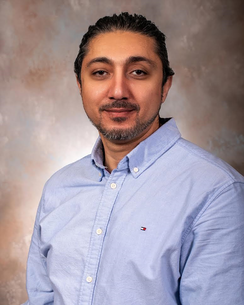 Photo Credit: Mohamed Sallam Photo Credit: Mohamed Sallam written by: Megan Ma This week’s colloquium speaker, Dr. Mohamed Sallam, is a disease and arthropod vector ecologist who has worked in a variety of positions. His previous appointments include working as a research scientist for developing integrated pest management programs, senior analyst at USEPA (United States Environmental Protection Agency), and entomologist for the U.S. Navy. His background has led him to a position in Bethesda, MD as an Assistant Professor at Uniformed Services University (USU), where he is mentoring students and facilitating safer conditions in deployed military environments and U.S. military bases. Specifically, he is seeking ways of preventing disease transmission by developing models to reduce arthropod-disease vector-host contact. This can include efficiently treating uniforms – identifying regions of the body that are more likely to be targeted by mosquitoes minimizes the cost of treating full uniforms while maximizing the protection of high-risk areas of vector-host contact. To consider the full range of environmental and public health hazards, Dr. Sallam emphasizes the importance of understanding micro- and macrohabitats. This begins with research that can link models with the biology of your organism of interest. Dr. Sallam lists a number of factors that allow for effective modeling of landscape-climate changes to assess disease risk. For modeling, he considers the data resolution (Remote Sensing techniques) and scale (temporal and spatial). These factors can help determine if increasing distance, or including certain landscape characteristics, will impact results. For vector biology, he considers vector density (mosquito abundance/area) versus vector-host contact ratio (mosquito abundance/human density per block). These considerations will allow for building operationally better models that capture how different systems interact with each other.
To demonstrate, he provided a sample scenario. In this example, he found a greater abundance of mosquitoes in areas with breeding sites and saw that these areas did not significantly overlap with those populated by humans. Using Geographic Information Systems (GIS), he treated these two observations as separate scenarios – he built a model for each and incorporated mosquito biology (vector-host contact ratio) to determine which model would be of best fit, which is dependent on the research end goal. Dr. Sallam’s advice, “learn everything you can,” and enthusiasm to expand his research interests through student involvement show that one can still continue to learn about related fields of research even after a journey of figuring out what career path fits best. To learn more about Dr. Sallam’s work, please visit: https://www.usuhs.edu/node/124845 Comments are closed.
|
Categories
All
Archives
June 2024
|
Department of Entomology
University of Maryland
4112 Plant Sciences Building
College Park, MD 20742-4454
USA
Telephone: 301.405.3911
Fax: 301.314.9290
University of Maryland
4112 Plant Sciences Building
College Park, MD 20742-4454
USA
Telephone: 301.405.3911
Fax: 301.314.9290

 RSS Feed
RSS Feed




